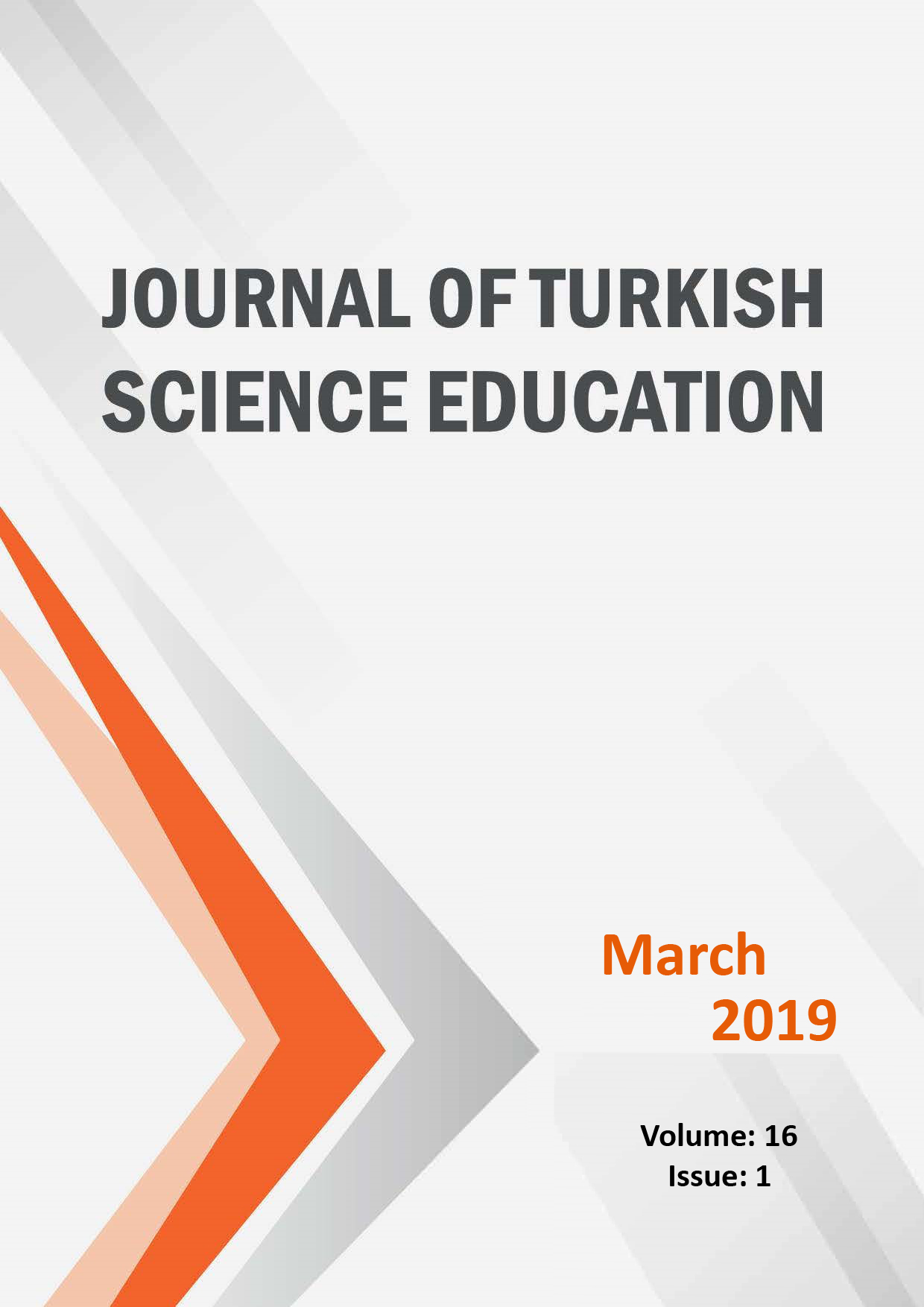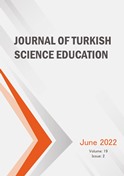Implementating multiple representation-based worksheet to develop critical thinking skills
DOI:
https://doi.org/10.36681/Keywords:
critical thinking skills, multiple representations, student worksheetAbstract
This study aimed to foster students' critical thinking skills through the use of multiple representationbased worksheet. Through a quasi-experimental research design (non-equivalent control group design), the sample of the study consisted of 74 students drawn from a junior high school in North Lampung. This sample was divided into two groups to assign the experimental and control groups. The experimental group was exposed to multiple representation-based worksheet, while the control group was instructed with conventional worksheet The results of independent samples t-test showed that the experimental group was effective in fostering critical thinking skills (N-Gain = 0,34 --medium category). Furthermore, the study found the following indicators: providing an elementary clarification (N-Gain = 0,51 --medium category), building basic support (N-Gain = 0,39 --medium category), inferring (N-Gain = 0,24 --low category), making advance clarification (N-Gain = 0,46 –medium category), and setting the strategies and tactics (N-Gain = 0,10 --low category).
Downloads
References
Abdurrahman, Liliasari, Rusli, A., & Waldrip, B. (2011). Implementation of multiple representation-based instructions to improve the mastery of quantum physics conpts. Cakrawala Pendidikan, 30(1), 30-45.
Abdurrahman. (2010). The role of quantum physics multiple representations to enhance concept mastery, generic science skills, and critical thinking disposition for pre-service physics teacher students (Doctoral dissertation, Indonesia University of Education, Bandung, Indonesia).
Ainsworth, S. (2008). The educational value of multiple-representations when learning complex scientific concepts. In Visualization: Theory and practice in science education (pp. 191-208). Netherlands: Springer.
Ainsworth, S., & Van Labeke, N. (2002). Using a multi-representational design framework to develop and evaluate a dynamic simulation environment. In international workshop on dynamic visualizations and learning. Germany: Tubingen.
Ainsworth, S., & Van Labeke, N. (2004). Multiple forms of dynamic representation. Learning and instruction, 14(3), 241-255.
Ainsworth, S., Bibby, P., & Wood, D. (2002). Examining the effects of different multiple representational systems in learning primary mathematics. The Journal of the Learning Sciences, 11(1), 25-61.
Ainsworth, S., Prain, V., & Tytler, R. (2011). Drawing to learn in science. Science, 333(6046), 1096-1097.
Anwar, S., Favier, P., Rasolomampionona, D.D. (2012). Project-based international collaboration in solar energy education: a case study from France. Ch. 20. In: In Handbook of Research on Solar Energy Systems and Technologies (pp. 517-522). IGI Global.
Astuti, Y. W. (2013). Bahan ajar fisika SMA dengan pendekatan multi representasi. Jurnal Pendidikan Sains, 1(4), 382-389.
Atila, M. E., Günel, M., & Büyükkasap, E. (2010). The effect of using different multi modal representations within writing to learn activities on learning force and motion unit at the middle school setting. Journal of Turkish Science Education, 7(4), 128-133.
Balouktsis, I., & Kekkeris, G. (2013). Energy education in Greece: Learning about renewable electrical energy perspectives. In EAEEIE Annual Conference (EAEEIE), 2013 Proceedings of the 24th (pp. 128-132). IEEE.
Çakirlar, E. & Turan, S.L. (2017). Awareness of secondary school students about renewable energy sources. Renewable Energy, 116, 741-748.
Çakirlar, E. & Turan, S.L., (2014). Yenilenebilir enerji kaynaklarinin farkindaliginda ögretim programlarinin rolü. 4 th International Symposium of Policies and Issues on Teacher Education, Ankara, 15–16.
Casagrand, J., & Semsar, K. (2017). Redesigning a course to help students achieve higherorder cognitive thinking skills: from goals and mechanics to student outcomes. Advances in physiology education, 41(2), 194-202.
Champion, S., Greene, J.S., Morrissey, M., Postawko, S. (2014). Renewable energy education and awareness in Oklahoma. Energy Education Science and Technology Part B: Social and Educational Studies, 6(1):55–68.
Chen, R. F., Eisenkraft, A., Fortus, D., Krajcik, J., Neumann, K., Nordine, J., & Scheff, A. (Eds.). (2014). Teaching and learning of energy in K-12 education. Cham, Switzerland: Springer.
Creswell, John W. (2008). Educational Research: Planning, Conducting, and Evaluating Quantitative and Qualitative Research. Pearson Education. Boston.
Curry, T., Reiner, D., Figueiredo, M. & Herzog, H. (2005). A survey of public attitudes towards energy and environment in Great Britain. Massachusetts Institute of Technology Laboratory for Energy and Environment, http://sequestration.mit.edu/pdf/LFEE_2005549 001_WP.pdf.
Dahar, R. W. (1986). Interaksi Belajar Mengajar IPA. Universitas Terbuka. Jakarta.
Demirbag, M., & Günel, M. (2014). Integrating argument-based science inquiry with modal representations: Impact on science achievement, argumentation and writing skills. Educational Sciences: Theory & Practice, 14(1), 373-392.
De Waters, J., Qaqish, B., Graham, M., Powers, S. (2013). Designing an energy literacy questionnaire for middle and high school youth. J Environ Educ;44 (1):56–78.
Dias, R., Mattos, C., Balestieri, J. (2004). Energy education: breaking up the rational energy use barriers. Energy Policy;32:1339–47.
Duit, R. (2014). Teaching and learning the physics energy concept. In R. F. Chen, A. Eisenkraft, D. Fortus, J. Krajcik, Educational Sciences: Theory & Practice, 14(1), 373392.
Eilam, B., & Poyas, Y. (2010). External Visual Representations in Science Learning: The case of relations among system components. International Journal of Science Education, 32(17), 2335-2366.
Emodi, N. V. & Ebele, N. E. (2016). Policies Enhancing Renewable Energy Development and Implications for Nigeria. Sustainable Energy.
Ennis, R. H. (1985). A logical basis for measuring critical thinking skills. Educational Leadership, 43(2), 44–48.
Gunel, M., & Yesildag-Hasancebi, F. (2016). Modal Representations and their Role in the Learning Process: A Theoretical and Pragmatic Analysis. Educational Sciences: Theory and Practice, 16(1), 109-126.
Haglund, J., Jeppsson, F., & Andersson, J. (2012). Young children's analogical reasoning in science domains. Science Education, 96(4), 725-756.
Hake, R. R. (2002). Relationship of individual student normalized learning gains in mechanics with gender, high-school physics, and pretest scores on mathematics and spatial visualization. In Physics Education Research Conference (pp. 1-14).
Hilton, A., & Nichols, K. (2011). Representational classroom practices that contribute to students’ conceptual and representational understanding of chemical bonding. International Journal of Science Education, 33(16), 2215-2246.
Hirça, N., Çalik, M., & Akdeniz, F. (2008). Investigating grade 8 students' conceptions of'energy'and related concepts. Journal of Turkish Science Education, 5(1).
Hoban, G. & Nielsen, W. (2012). Using “Slowmation” to enable preservice primary teachers to create multimodal representations of science concepts. Research in Science Education, 42(6), 1101-1119.
Ibrahim, K., Hilme, K. R. A. (2007). Centre for Education, Training, and Research in Renewable Energy and Energy Efficiency (CETREE) of Malaysia: educating the nation. AIP Conf. Proc;941:164–74.
Ismet. 2013. Dampak Program Perkuliahan Mekanika Berbasis Multipel Representasi Terhadap Kecerdasan Spasial Mahasiswa Calon Guru. Jurnal Pendidikan Fisika Indonesia, 132-143.
Kabatas Memis, E. (2015). The effect of using multi modal representation on learning “force and motion” unit of students at 7 th grade. Çukurova University Faculty of Education Journal,44(1), 23-40.
Kandpal, T.C., Broman, L. (2014). Renewable energy education: a global status review. Renew Sustain Energy Rev;34:300–24.
Karatepe, Y., Nese, V.S., Kecebas, A., Yumurtaci, M. (2012). The levels of awareness about the renewable energy sources of university students in Turkey. Renew Energy;44:174–9.
Kurnaz, M. A., & Arslan, A. S. (2014). Effectiveness of multiple representations for learning energy concepts: Case of Turkey. Procedia-Social and Behavioral Sciences, 116, 627632.
Lancor, R. A. (2014). Using student-generated analogies to investigate conceptions of energy: a multidisciplinary study. International Journal of Science Education, 36(1), 1–23.
Lee, H.-S., & Liu, O. L. (2010). Assessing learning progression of energy concepts across middle school grades: the knowledge integration perspective. Science Education, 94(4), 665–688.
Mayer, R. E. (2003). The promise of multimedia learning: using the same instructional design methods across different media. Learning and instruction, 13(2), 125-139.
Meltzer, D. E. (2005). Relation between students’ problem-solving performance and representational format. American Journal of Physics, 73(5), 463-478.
Indonesia Ministry of Education & Culture. (2014). Training module implementation of curriculum 2013. Human Resources Development Agency of Education and Culture and Education Quality Assurance. Jakarta.
National Research Council. (1996). National science education standards. National Academies Press.
National Research Council. (2011). Knowing what students know: The science and design of educational assessment (J.W. Pelligrino, N. Chudowsky, & R. Glaser, Eds.). Washington, DC: National Academy Press.
National Research Council. (2012). A framework for K-12 science education: Practices, crosscutting concepts, and core ideas. Washington, DC: National Academies Press.
Neumann, K., Viering, T., Boone, W. J., & Fischer, H. E. (2013). Towards a learning progression of energy. Journal of Research in Science Teaching, 50, 162–188.
Ntona, E., Arabatzis, G., & Kyriakopoulos, G. L. (2015). Energy saving: views and attitudes of students in secondary education. Renewable and Sustainable Energy Reviews, 46, 115.
Olugbenga, P. F. (2010). Energy exploitation, utilization, and its environmental effects – the choice to make and the decision to take. Toxicol Environ Chem; 91(5):1015–9.
Omer, M. A. (2007). Energy, environment and sustainable development. Renew Sustain Energy Rev;12:2265–300.
Organisation for Economic Cooperation and Development (OECD). (2013). Snapshot of performance in mathematics, reading and science. Retrieved November 11, from http://www.oecd. org/pisa/keyfindings/PISA-2012-results-snapshot-Volume-I-ENG.pdf).
Öz, M., & Memiş, E. K. (2018). Effect of Multi Modal Representations on the Critical Thinking Skills of the Fifth Grade Students. Indexing/Abstracting, 14(2), 209.
Özmen, H., & Yildirim, N. (2005). Effect of work sheets on student's success: Acids and bases sample. Journal of Turkish science education, 2(2), 64.
Podschuweit, S., & Bernholt, S. (2017). Composition-Effects of Context-based Learning Opportunities on Students’ Understanding of Energy. Research in Science Education, 136.
Potter, M. L. (2010). From Search to Research: Developing Critical Thinking Through Web Research Skills©. Microsoft Corporation, 1-39.Practice, 16(1), 109-126.
Prain, V., & Tytler, R. (2012). Learning through constructing representations in science: A framework of representational construction affordances. International Journal of Science Education, 34(17), 2751-2773.
Ristiasari, T., Priyono, B., & Sukaesih, S. (2012). Model Pembelajaran Problem Solving dengan Mind Mapping terhadap Kemampuan Berpikir Kritis Siswa. Journal of Biology Education, 1(3).
Saido, G. A., Siraj, S., Nordin, A. B., & Al-Amedy, O. S. (2017). Teaching strategies for promoting higher order thinking skills: A case of secondary science teachers. MOJEM: Malaysian Online Journal of Educational Management, 3(4), 16-30.
Singh, A., Olsen, S. I., & Pant, D. (2013). Importance of life cycle assessment of renewable energy sources. In Life Cycle Assessment of Renewable Energy Sources (pp. 1-11). Springer, London.
So, W. (2016). Representational Practices in Extra-Curricular Science Inquiry Projects: A Study with Asian Primary Pupils. International Journal of Science & Mathematics Education, 14(1).
Stebila, J., Brozman, D., Ružiak, I., Gajtanska, M. (2014). Environmental aspects of renewable sources of energy in the Slovak education system. Adv Mater Res;1001:45–51.
Sugiyono. (2010). Metode Penelitian Pendidikan: Pendekatan Kuantitatif, Kualitatif, dan R & D. Alfabeta. Bandung.
Sunyono, Yuanita, L., & Ibrahim, M. (2015). Mental Models of Students on Stoichiometry Concept in Learning by Method Based on Multiple Representation. The Online Journal of New Horizons in Education, 5(2), 30-45.
Susilowati, S., Sajidan, S., & Ramli, M. (2017). Analisis Keterampilan Berpikir Kritis Siswa Madrasah Aliyah Negeri di Kabupaten Magetan. In Prosiding SNPS (Seminar Nasional Pendidikan Sains) (p. 223).
Tang, K. S., Delgado, C., & Moje, E. B. (2014). An integrative framework for the analysis of multiple and multimodal representations for meaning-making in science education. Science Education, 98(2), 305-326.
The International Association for the Evaluation of Educational Achievement (IEA). (2012). TIMSS 2011 Science Achievement. Retrieved November 16, 2015, from http://timssandpirls.bc.edu/data-release-2011/pdf/Overview-TIMSS-and-PIRLS-2011Achievement.pdf.
Tolppanen, S., Rantaniitty, T., McDermott, M., Aksela, M. & Hand, B. (2013). Effectiveness of a Lesson on Multimodal Writing in Science Education. LUMAT, 1(5), 503-522.
Tsui, C. Y., & Treagust, D. F. (2003). Genetics reasoning with multiple external representations. Research in Science Education, 33(1), 111-135.
Tytler, R., Peterson, S., & Prain, V. (2006). Picturing evaporation: Learning science literacy through a particle representation. Teaching Science: The Journal of the Australian Science Teachers Association, 52(1).
Won, M., Krabbe, H., Ley, S. L., Treagust, D. F., & Fischer, H. E. (2017). Science teachers’ use of a concept map marking guide as a formative assessment tool for the concept of energy. Educational Assessment, 22(2), 95-110.
Downloads
Published
Issue
Section
License

This work is licensed under a Creative Commons Attribution-NonCommercial-NoDerivatives 4.0 International License.
This license enables reusers to copy and distribute the material in any medium or format in unadapted form only, for noncommercial purposes only, and only so long as attribution is given to the creator. CC BY-NC-ND includes the following elements: Credit must be given to the creator; only noncommercial uses of the work are permitted; no derivatives or adaptations of the work are permitted.


